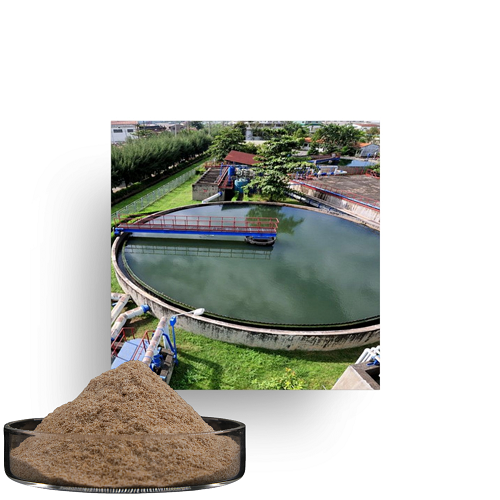
Home Products Sewage Treatment Bacteria Petrochemical Wastewater Treatment Excessive ammonia nitrogen wastewater tr
Pharmaceutical wastewater is one of the most difficult industrial wastewater to treat at present, because of its complex composition, many kinds of organic substances, high concentration (ammonia nitrogen, salt, organic substances, etc.), and the discharge time is not fixed.
The current pharmaceutical wastewater can not meet the design requirements due to the large fluctuations in the concentration of ammonia nitrogen and organic matter in the influent, and the large changes in water quality and volume, resulting in the effluent COD and ammonia nitrogen pollutants exceeding the standard.
The treatment processes of ammonia nitrogen wastewater mainly include: biological denitrification method, break point chlorination method, stripping method and chemical precipitation method. Generally, the front-end enhanced pretreatment (break point chlorination method, stripping method and chemical precipitation method) is used to treat high ammonia nitrogen wastewater first, and then the biological method is used to degrade ammonia nitrogen pollutants to meet the discharge standard.
The removal of ammonia nitrogen pollutants is divided into two parts: one is the pretreatment part, which is the ammonia nitrogen blowing tower, and the other is the biological nitrogen removal part, which is a two-stage A/O.
① Ammonia nitrogen stripping
Ammonia nitrogen stripping method is used to treat high concentration ammonia nitrogen wastewater, which has been applied by many enterprises. However, secondary pollution will occur during the treatment process, and the by-product ammonium sulfate can be obtained by recovering waste gas with strong acid.
The principle of the stripping method is to take advantage of the characteristic that ammonia nitrogen in water mainly exists as free ammonia under alkaline conditions, and introduce gas into the water body to fully contact the gas and liquid. The free ammonia in water passes through the gas liquid interface and transfers to the gas phase, so as to achieve the purpose of removing ammonia nitrogen in water.
② Biological denitrification

The two-stage A/O process mainly includes two A/O tanks, which are connected in series and have the characteristics of stable effluent and strong impact resistance. Therefore, even if the nitrogen content in the water is high, the process can play a role in nitrogen removal to a large extent
Biological nitrogen removal relies on nitrification and denitrification. Nitrification is a process in which nitrifying bacteria transform ammonia into nitrite and nitrate under aerobic conditions. Denitrifying process is a process in which denitrifying bacteria convert nitrite and nitrate in wastewater into N2 under low or no oxygen conditions.
Name: Nicole Yu
Mobile:+86 17718148007
Tel:+86 17718148007
Whatsapp:8617718148007
Email:sales@kashionbiotech.com
Add:No.6, Zhanxi Road, Yaohai District, Hefei City, Anhui Province, China.